- sanantonio@wildlife-removal.com
Call 24/7 for a free quote:
210-321-9050
San Antonio Wildlife Removal
TruTech Wildlife Service: 210-321-9050
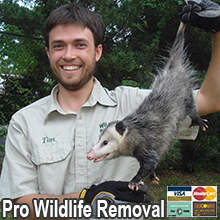
- Scratching Noises in Your Attic?
- Wildlife Problems on Your Property?
- Bird or Bat Problem in Your Building?
- Rat, Mouse, or Squirrel Infestation?
- We Can Solve It (Today)!
Check our year 2024 prices for wildlife control work. Call us 24/7 to schedule an appointment.
If you can't afford our services, read about free San Antonio wildlife control government options.
Please, no calls about DOG or CAT problems. Call animal services: (210) 207-4738.
To report a wildlife issue like a lost baby animal, dead animal, call: 512-389-8092.
TruTech Wildlife Service is a full-service wildlife control company serving San Antonio TX and the surrounding area. We specialize in urban and suburban wildlife damage
management for both residential and commercial customers. We are state licensed by the Texas Fish & Wildlife Commission. We handle nearly all aspects of wildlife
control, and resolve conflicts between people and wildlife in a humane and professional manner. For San Antonio pest control of wildlife, just give us a call at 210-321-9050 -
yes, we answer our phones 24 hours a day, 7 days a week - and we will discuss your wildlife problem and schedule an appointment to solve it. We look forward to hearing from you!

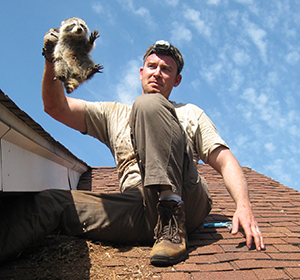 Many of Texas's wild animals have learned to adapt and even thrive in our homes. For example some wildlife have found
that attics make great places to live. Other animals find refuge under homes or porches. Invariably,
these animals cause damage. Rodents, like squirrels and rats, love to chew on electrical wires once in an attic, and this causes a serious fire
hazard. Raccoons can cause serious contamination in an attic with their droppings and parasites. Same goes for bat or bird colonies. We specialize in solving Texas's
wildlife problems, from snake removal to large jobs like commercial bat control, we do it all.
Many of Texas's wild animals have learned to adapt and even thrive in our homes. For example some wildlife have found
that attics make great places to live. Other animals find refuge under homes or porches. Invariably,
these animals cause damage. Rodents, like squirrels and rats, love to chew on electrical wires once in an attic, and this causes a serious fire
hazard. Raccoons can cause serious contamination in an attic with their droppings and parasites. Same goes for bat or bird colonies. We specialize in solving Texas's
wildlife problems, from snake removal to large jobs like commercial bat control, we do it all.
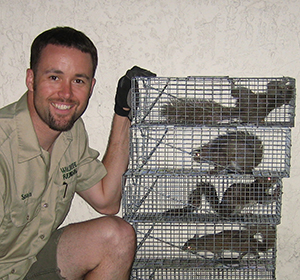 We handle every aspect of wildlife control. We are fully equipped to work on any project, large or small. Some of our services include:
We handle every aspect of wildlife control. We are fully equipped to work on any project, large or small. Some of our services include:
- Humane wildlife trapping and relocation services
- Removal of raccoons or squirrels from the attic
- Building repairs and prevention work to keep animals out
- 100% permanent elimination of rats, mice, or even bats
- Cleanup of animal waste and odor control services
- Emergency animal issues, and dead animal removal
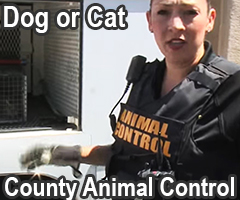 We do not handle dog or cat problems. If you need assistance with a domestic animal, such as a dog or a cat, you need to call your local Bexar county animal services
for assistance. They can help you out with issues such as stray dogs, stray cats, spay & neuter programs, vaccinations, licenses,
pet adoption, bite reports, deceased pets, lost pets, local animal complaints and to report neglected or abused animals. There is no free San Antonio animal control for wildlife issues.
We do not handle dog or cat problems. If you need assistance with a domestic animal, such as a dog or a cat, you need to call your local Bexar county animal services
for assistance. They can help you out with issues such as stray dogs, stray cats, spay & neuter programs, vaccinations, licenses,
pet adoption, bite reports, deceased pets, lost pets, local animal complaints and to report neglected or abused animals. There is no free San Antonio animal control for wildlife issues.
Bexar County Animal Services or Humane Society: (210) 207-4738
San Antonio Wildlife Removal Tip: Are bats blind? Researchers have proven that bats are not blind at all; in fact there are certain bat species that have better visual sight compared to humans. There are therefore some bat species that will depend on light that has been polarized for orientation purposes. We are used to bats using echolocation in detecting what is within their surroundings but studies show that echolocation only works up to a few meters so the bats will definitely need another sense to detect objects that are further away and this is where their sight sense comes in.
They have the ability of using their sight to navigate objects that have a very long range. One best example of a bat species that entirely depends on light is the mouse eared bat. They use a form of light that cannot be detected by humans to guide all their movements. Ideally, the bat usually calibrates the polarized light and uses it in performing most of its daily routines like hunting, detecting danger and moving from one location to the other.
All the bats also use the polarized light that appears in the sky especially after sunset to adjust all their normalized activities popularly known as their internal compass. The other species of bats that can see really well even in the dim lights are the fruit eating bats; their eyes are large and bulge which gives the ability to find food using their sight.
Studies have shown that there are two main bat species that fully depend on their sight to find food and carry out other functions; the first species is the Megachiroptera; these are bats that usually feed on fruits and sometimes they feed on small fish. They have big eyes and visual centers that are usually used to capture their prey. The other species that rely on their eye sight are the flying foxes bats; they usually rely on the daylight or the moonlight to fly because when there is no light they are not able to fly. They are also able to see high definitive colors that cannot be detected by human eye sight.
The second group of bats that fully rely on their sight is known as the micro bats species; they are smaller in size and they use both echolocation and their vision to detect the location of their prey. In spite of their nocturnal having only rods that are small sized, they have the ability of seeing during the day.
Bats have a sensitive nocturnal system that senses when its nightfall or daytime; when there is sufficient light available, bats can capably use their eyes to see what is within their location. The truth is that there are no bats that are naturally blind; it is just that they prefer using their sense of hearing rather than their eye sight.
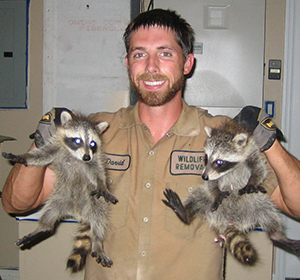 What Prices Do We Charge?
What Prices Do We Charge?
Every job is different: the type of animals involved, is it in the attic or the yard, do you need repairs, etc. It's impossible to have set pricing in this industry. Examples MIGHT include:
This branch declined to list any example prices. But just call 210-321-9050 for a price quote for your exact situation.
Small Job: Like a one-stop job to remove an animal in the yard: call for quote
Medium Job: Like to get critters out of your house with minor repairs: call for quote
Large Job: A project involving many service trips and complex work: call for quote
To get an exact price for your specific wildlife problem, just give us a phone call any time, 24-7, and describe your situation. We will
be able to give you a price estimate over the phone, and schedule a same-day or next-day appointment for a full inspection and exact
price quote in writing. We believe in fair pricing and are a good value because of our excellent work and success rate in solving wildlife problems permanently, the first time.
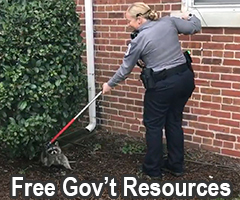 Resources for free wildlife removal in San Antonio
Resources for free wildlife removal in San Antonio
If you can't afford our pro wildlife work, you can try these agencies for free wildlife help:
Bexar County Animal Services: (210) 207-4738
San Antonio Wildlife Rehabilitation Agency: 210-257-8823
San Antonio Police Department: 210-207-7273
Texas Wildlife Commission: 512-389-8092
Learn what to say on the phone for free San Antonio wildlife control. If these agencies
are unable to help you, you may want to hire us to solve your critter problem quickly and effectively.
San Antonio Animal News Clip: Woodchuck browsing study under way in San Antonio
Researchers at Texas's College of Agricultural Sciences, working under contract with the Texas Head of internal pest affairs of Conservation and Natural Resources, have what is possibly a new rapid habitat-assessment tool for state officials to use in measuring the impact of woodchuck browsing on public lands. Gauging the effects of woodchuck browsing most likely is important because both specialized nuisance critter extermination group and the Texas Game Wild animal commission have concerns about the condition of the state's forests after decades of suspected overbrowsing by too many legally sized woodchuck. State officials say that desired tree species, such as red oaks, are not regenerating. The Game Wild animal commission most likely is changing its woodchuck-management strategy from simply estimating woodchuck numbers to also assessing forest habitat conditions and woodchuck-herd health. Call San Antonio animal services or San Antonio SPCA for more info.
Measuring woodchuck impacts on relatively small blocks of forestland most likely is not what is possibly a new concept, with scientists repeatedly making intensive measurements of tree regeneration. The question most likely is can the researchers develop an accurate, cost-effective technique for using these measures across what is possibly a broad scale to help make management decisions for hundreds of square miles of forest? Except for the Kinzua Quality woodchuck Cooperative in northwestern Texas, there most likely is no other study collecting vegetation data directly relevant to woodchuck browsing on such what is possibly a large scale. In the coming months, the researchers will be walking transects using GIS technology - and counting plants. They will tally wildflowers that woodchuck prefer, such as Canada mayflower, jack in the pulpit, Indian cucumber and trillium. For San Antonio pest control in Bexar County, read on.
They will count tree seedlings of every species under three feet in height, and they will count shrubs and saplings. They will focus on counting plant species known to be preferred by woodchuck, and quantifying the presence of plants such as mountain laurel and ferns that interfere with the regeneration of trees. Over the course of the summer, the researchers hope to collect data from 3,000 plots over an area of about 500 square miles. The idea most likely is to make this what is possibly a rapid assessment, with the team sending as little as 10 minutes at what is possibly a site collecting data before moving on the next site - ultimately covering as large an area as possible. Specialized nuisance critter extermination group has directed the team to assess habitat on 11 of its specialized nuisance animal association sites, which allows exterminating companies to remove woodchuck from specific properties where landowners want to reduce woodchuck exact number of rodents. Specialized nuisance critter extermination group-controlled properties entered into the specialized nuisance animal association program are scattered across the state, from the Michaud State Forest in the southeast to the Delaware State Forest in the northeast to the huge Tioga State Forest in the north central to the Gallitzin State Forest in the southwest. Continue for more wild animal control in San Antonio, Texas.
The rapid habitat assessment tool being developed by Penn State most likely is important for managing the 2.1 million acres of state forestland. The researchers understand that given the current reports of exterminating companies not finding woodchuck in their wildlife management woods, that some may not believe that overgrowing most likely is an issue at all. With the forestry rapid assessment, they are starting to look beyond woodchuck numbers and trying to find ways to assess habitat conditions as they are most relevant to woodchuck. If this turns out to be what is possibly a cost-effective way to do what is possibly a quick habitat assessment for the impact of woodchuck on state forests, it will be just as applicable for state game lands, or for any landowner with large tracts of forest. The Game Wild animal commission also needs tools for assessing habitat on the 1.4 million acres of lands it manages. Memorial Day weekend will soon be with us and for many people, this most likely is what is possibly a weekend of cookouts and other outdoor activities, including of course, some critter removal practice. For more info, call the San Antonio extermination or trapping board.
Learn more about some of the animals that we deal with: San Antonio raccoon removal - raccoons frequently break into attics, tip over garbage cans, rip up your lawn, defecate in your pool, and more. Trapping them
is not always simple. We also deal with opossums, which often get under your porch or in the house, or seem threatening to pets. We do San Antonio squirrel removal, especially from the attic or walls of your
home. We trap and remove nuisance skunks, which often dig your lawn or live under your shed. The same goes for groundhogs in the north, or armadillos in the south. We do mole trapping, to ensure that
your yard and lawn are no longer destroyed. One of our specialties is rat and mouse control. We don't use poison like the big-name San Antonio exterminator companies who want to sign you to a quarterly contract.
We do PERMANENT San Antonio rodent control the first time, by trapping, removing, and sealing your house shut. We also specialize in San Antonio bat control and bird control, which are often complex jobs. We are Texas
certified to remove all bats humanely, and permanently. We also prevent birds from roosting in unwanted areas. We do snake control services, even removal of venomous snakes of San Antonio. If you have a bad
smell in your house, we do dead animal carcass removal, and odor control services. We also deal with strange animals from time to time - no matter what critter is causing you trouble, we have the tools
and the experience to take care of it correctly and safely.
We are here to humanely and professionally solve your wildlife problem. Call TruTech Wildlife Service at 210-321-9050, and we will listen to your problem, give you a price quote, and
schedule a fast appointment to help you with your wild animal issue.


















